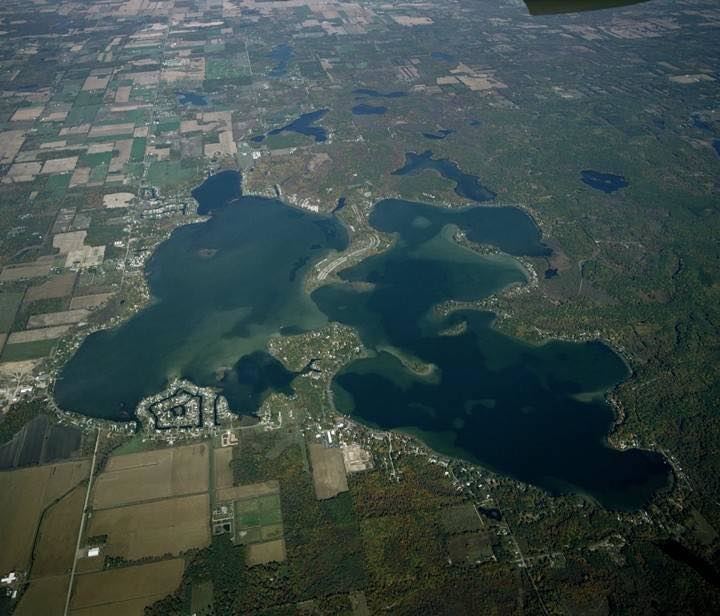Gun Lake Protective Association |
Gun Lake Improvement Board (GLIB) and Weed Control

History
In the late 1990’s, an aquatic invasive species called Eurasian Watermilfoil (EWM) began appearing in Gun Lake. Because of its dense, canopy-like growth, it killed native and beneficial pondweeds below it; and halted any boat traffic that tried to pass through it.
Recognizing the threat, the Gun Lake Protective Association (GLPA), hired Progressive AE to manage a treatment plan. This was very costly to undertake on a 2700 acre heavily-infested lake, so the GLPA was forced to increase their voluntary dues. But as the dues increased, fewer people elected to join each year – even though they continued to enjoy the benefits of the weed treatments. In order to make weed control equitable, the GLPA began working with the four townships on Gun Lake, and set up a Special Tax Assessment District solely for the purpose of controlling Gun Lake Aquatic Invasive Species (AIS) and Watershed Management. Every parcel of land that touched the lake or channel water (or had a shared access) was put into the District, and in 2003, the Gun Lake Improvement Board (GLIB) was born.
Who GLIB is and what we do
A 9-member group oversees use of these assessments. It is comprised of the Allegan and Barry County Drain Commissioners; an elected representative from Barry and Allegan county; an representative from each township (Yankee Springs, Orangeville, Martin and Wayland); and one representative from the Gun Lake Protective Association (the majority of these members also are Gun Lake residents). GLIB hires a Water Management Company (Environmental Engineers) who survey the lake for invasive species. The management company contracts with an Application Company to spray areas showing heavy AIS. Currently, the assessment amount is reviewed and adjusted as needed every 3 years.
GLIB in action
In addition to Eurasian Watermilfoil GLIB also monitors and addresses new outbreaks. One is Starry Stonewort (a dense weed-like algae that blocks navigation and kills native plant life). In 2015, GLIB worked with Grand Valley and Central Michigan University, the DNR and DEQ, as part of a Grant to study ways to combat Starry Stonewort. GLIB also monitors nearby threats like Frogbit (a tiny-leafed lily-pad) or Cabomba (an aquarium plant that goes invasive when in the wild).
GLIB partnered with the GLPA to bring 3 boat-cleaning stations (paid for through a generous gift from the Gun Lake Tribe) to our major boat launches in 2019. GLIB also supported remediation of the Cuddy Drain which had delivered debris, sediment, and E. coli to Gun Lake for decades.
How weed treatment is done
Engineering firm puts a boat on the lake, and drives the entirety of the shoreline (treatments seldom extend farther than 100’ from shore); or on another day surveys all of Gun Lake’s channels.
A “claw” is tossed into suspect growth areas and brought up loaded with weeds. Invasive species are identified if present. Location data is logged into a GPS system. A “map” is created showing areas to be spot-treated.
Treatment map is sent to the Applicator, along with notes for type of chemicals, and quantities to be applied (permit is required). GLIB is notified when an application date has been set.
Each property near a treatment site is notified by leaving a flyer posted at their waterfront.
When the weather conditions are safe, treatments are conducted.
Now that Aquatic Invasive Species are generally under control, less than 1% of the lake is ever treated; and the most heavily used treatment is copper sulphate (works against Starry Stonewort) – the same stuff put in swimming pools to keep algae from forming. The safety of the lake residents, both human and critter, is foremost when treatments are occurring.
